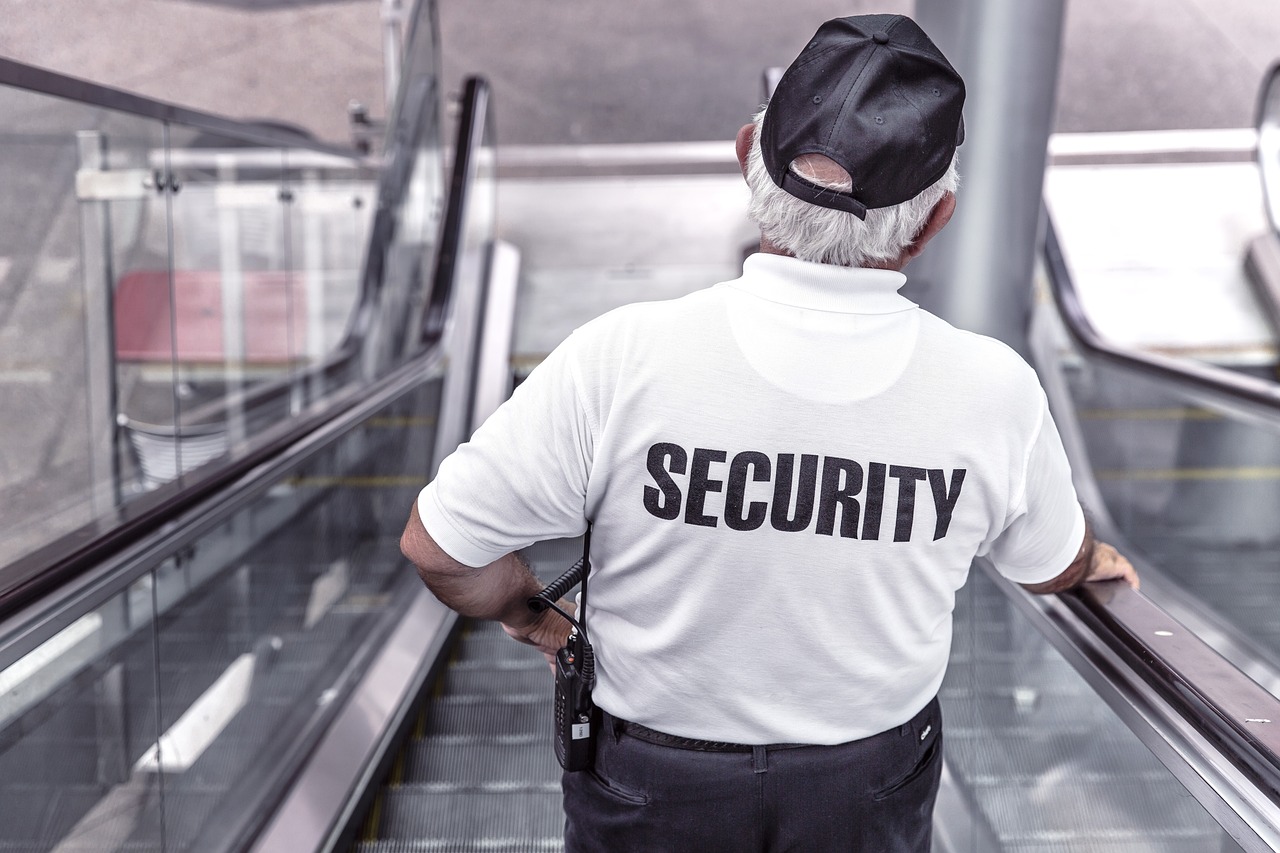Elevating Safety Measures through Understanding Human Behavior
In today's fast-paced world, where risks and hazards can lurk around every corner, the importance of safety measures cannot be overstated. But what if I told you that the key to enhancing these measures lies not just in protocols and procedures, but in understanding human behavior? Yes, you heard that right! By diving deep into the psychological aspects of how people think and act, we can revolutionize our approach to safety. Imagine a workplace where every individual is not only aware of the risks but is also actively engaged in creating a safer environment. This article will explore the profound impact that understanding human behavior can have on safety protocols across various settings, emphasizing that when we consider the human element, we can elevate safety measures to new heights.
Psychology plays a pivotal role in the design and implementation of safety measures. Think about it: how do we perceive risk? How do we make decisions when faced with potential danger? By understanding these psychological principles, organizations can develop strategies that not only inform employees of the risks but also encourage them to adopt safer behaviors. For instance, if a safety protocol feels too complicated or cumbersome, employees might be less likely to follow it. But when we simplify processes and relate them to everyday experiences, compliance increases. It's about making safety feel personal and relevant, which is where psychology comes into play.
Implementing behavioral safety programs can be a game-changer in reducing workplace accidents. These programs focus on observing and modifying employee behaviors, fostering a culture of safety and accountability. Imagine a team where everyone is not just aware of the safety protocols but actively participates in promoting them. This shift in mindset can drastically lower incident rates. Behavioral safety programs often include training sessions, workshops, and real-life simulations that make safety a collective responsibility rather than an individual task.
Effective training and awareness campaigns are the backbone of any successful behavioral safety program. By educating employees about potential risks and safe practices, organizations empower their workforce to make informed decisions daily. For example, consider a construction site where workers are trained to identify hazards and understand the importance of personal protective equipment (PPE). This knowledge not only protects the individual but also fosters a culture where safety is prioritized. The more informed employees are, the more likely they are to engage in safe behaviors.
Utilizing engagement techniques, such as interactive workshops and simulations, enhances learning and retention. These methods make safety training more impactful and memorable for employees. Imagine a workshop where employees participate in role-playing scenarios that mimic real-life situations. This hands-on approach not only makes the training enjoyable but also reinforces the importance of safety in a way that traditional lectures cannot. By actively engaging with the material, employees are more likely to remember and apply what they learn.
Establishing feedback mechanisms is crucial for creating an environment where employees feel comfortable reporting unsafe behaviors or conditions. This proactive approach to safety encourages collective responsibility among team members. For instance, implementing an anonymous reporting system can empower employees to speak up without fear of retribution. When workers know their voices matter, they are more likely to contribute to a safer workplace. Feedback loops also allow organizations to continually refine their safety measures based on real-time input from employees.
Regular monitoring and evaluation of safety programs are vital to measure their effectiveness. Analyzing data helps identify trends and areas for improvement, ensuring continuous enhancement of safety measures. For example, if a particular safety protocol is not being followed, data analysis can help pinpoint why. Is the protocol too complicated? Are employees unaware of its importance? By addressing these issues head-on, organizations can adapt and evolve their safety strategies to better meet the needs of their workforce.
Cultural factors significantly shape safety behaviors. Understanding these influences helps organizations tailor their safety initiatives to resonate with diverse employee backgrounds. For instance, in some cultures, there might be a strong emphasis on hierarchy, which can impact how safety messages are communicated and received. Recognizing these cultural nuances is essential for creating effective safety programs that engage all employees.
Different communication styles can affect how safety messages are received. Adapting communication strategies to suit various cultural contexts enhances the clarity and impact of safety information. For example, using visual aids or demonstrations can bridge language barriers and ensure that safety messages are understood by everyone, regardless of their primary language.
Social norms significantly influence individual behaviors in safety contexts. Recognizing and addressing these norms can help organizations create an environment that prioritizes safety and encourages positive behaviors. If safety is viewed as a collective value within a team, individuals are more likely to adhere to safety protocols. It's about cultivating a culture where safety is not just a set of rules but a shared value among all employees.
The integration of technology in safety measures can enhance awareness and compliance. Understanding how technology influences human behavior is essential for developing effective safety solutions. For instance, the use of mobile apps that provide real-time safety updates can keep employees informed and engaged in their safety practices.
Wearable safety devices can monitor employee health and safety in real-time. These technologies provide immediate feedback, enabling workers to adjust their behaviors and reducing the likelihood of accidents. Imagine a worker on a construction site wearing a device that alerts them when they are too close to a hazardous area. This instant feedback can prevent accidents before they happen, making the workplace significantly safer.
Utilizing data analytics helps organizations identify patterns in safety-related incidents. This analysis supports informed decision-making, allowing for targeted interventions that enhance overall safety performance. By examining data trends, organizations can proactively address potential safety issues before they escalate into serious problems. With the right data, organizations can not only react but also anticipate and prevent incidents.
- What is the importance of understanding human behavior in safety measures?
Understanding human behavior allows organizations to create safety protocols that resonate with employees, leading to higher compliance and a safer work environment. - How can behavioral safety programs reduce workplace accidents?
By focusing on modifying employee behaviors and fostering a culture of accountability, behavioral safety programs encourage proactive safety practices among workers. - What role does technology play in enhancing safety?
Technology, such as wearable devices and data analytics, provides real-time feedback and insights that help improve safety awareness and compliance.

The Role of Psychology in Safety
This article explores the significance of human behavior in enhancing safety protocols across various environments, emphasizing how understanding psychological aspects can lead to more effective safety measures.
When we think about safety, we often focus on physical measures—like hard hats, safety barriers, and warning signs. But what if I told you that the key to truly effective safety measures lies deeper, in the realm of psychology? Understanding how humans perceive risk, make decisions, and respond to their environments is crucial for crafting safety protocols that resonate with individuals on a personal level. Imagine trying to drive a car without understanding how the vehicle operates; similarly, safety measures without psychological insight can lead to ineffective outcomes.
At its core, psychology helps us decode the complexities of human behavior. For instance, consider the concept of risk perception. People often have a skewed sense of what is dangerous based on their experiences, emotions, and social influences. This means that a worker might underestimate the risks associated with a task they perform daily, leading to complacency. By applying psychological principles, organizations can design safety measures that not only inform but also engage employees in a meaningful way.
Let’s break this down further. Here are some psychological principles that can enhance safety measures:
- Behavioral Economics: Understanding how people make decisions can help in designing incentives that promote safer behaviors.
- Social Proof: People tend to follow the actions of others. Highlighting safe behaviors among peers can encourage a culture of safety.
- Framing Effects: The way safety information is presented can influence decision-making. For example, emphasizing the benefits of safety compliance rather than the consequences of non-compliance can lead to better adherence.
Moreover, the integration of psychological insights into safety training can transform the way employees engage with safety protocols. By utilizing techniques such as active learning and scenario-based training, organizations can create immersive experiences that not only educate but also empower employees to internalize safety practices. Imagine a training session where employees participate in simulations that mimic real-life scenarios; they are more likely to remember and apply what they’ve learned.
In summary, the role of psychology in safety is not just about understanding what makes people tick; it’s about leveraging that understanding to create a safer workplace. By integrating psychological principles into safety protocols, organizations can foster a culture where safety is valued, prioritized, and practiced daily. This proactive approach not only minimizes risks but also enhances overall employee well-being and productivity.
Q: How can understanding psychology improve safety measures?
A: By understanding how individuals perceive risk and make decisions, organizations can develop safety measures that resonate with employees, leading to better compliance and a culture of safety.
Q: What are some psychological principles that can be applied to safety?
A: Principles such as behavioral economics, social proof, and framing effects can significantly influence how safety information is communicated and adhered to.
Q: How does training play a role in enhancing safety through psychology?
A: Effective training that incorporates psychological insights, such as active learning and scenario-based training, can lead to better retention of safety practices among employees.

Behavioral Safety Programs
Behavioral safety programs are not just another corporate initiative; they are a transformative approach to fostering a culture of safety in the workplace. Imagine a world where every employee feels empowered to take ownership of their safety and the safety of their colleagues. This is the essence of behavioral safety programs, which focus on observing and modifying employee behaviors to create a safer working environment. By understanding the psychology behind human actions, organizations can implement strategies that resonate with their workforce, leading to a significant reduction in workplace accidents.
The foundation of a successful behavioral safety program lies in its ability to engage employees. It’s about more than just rules and regulations; it's about creating a community where safety is a shared responsibility. For instance, when employees are actively involved in safety discussions and decisions, they are more likely to adopt safe practices. This can be achieved through various methods, including:
- Peer Observations: Employees observe each other’s work practices and provide constructive feedback.
- Safety Committees: Forming committees that include employees from different levels can ensure diverse perspectives on safety issues.
- Recognition Programs: Acknowledging safe behaviors publicly can motivate others to follow suit.
Effective training and awareness campaigns are essential components of these programs. Educating employees about risks and safe practices empowers them to make informed decisions in their daily activities. Think of it as arming them with knowledge; the more they know about potential hazards, the better equipped they are to avoid them. Training sessions should be interactive and engaging, incorporating real-life scenarios that employees might face on the job. This not only enhances learning but also makes the training memorable.
Utilizing engagement techniques, such as interactive workshops and simulations, enhances learning and retention, making safety training more impactful. Imagine a workshop where employees can simulate emergency situations; this hands-on experience can be far more effective than a traditional lecture. By immersing employees in realistic scenarios, they can better understand the importance of safety protocols and how to implement them in their daily routines.
Establishing feedback mechanisms is another crucial aspect of behavioral safety programs. These mechanisms allow employees to report unsafe behaviors or conditions, fostering a proactive approach to safety. When employees feel they have a voice, they are more likely to engage in safety practices. This creates a culture of accountability where everyone looks out for one another. For instance, a simple anonymous reporting system can encourage employees to speak up without fear of retribution, ultimately leading to a safer workplace.
Regular monitoring and evaluation of safety programs are vital to measure their effectiveness. Analyzing data helps identify trends and areas for improvement, ensuring continuous enhancement of safety measures. Organizations can track incidents, near misses, and employee feedback to refine their programs. This data-driven approach not only highlights what’s working but also sheds light on what needs adjustment. It’s like a GPS for safety; it guides organizations in the right direction, ensuring they stay on course toward achieving their safety goals.

Training and Awareness
When it comes to fostering a culture of safety in the workplace, are not just buzzwords; they are the backbone of any effective safety program. Imagine walking into a workplace where every employee is not only aware of the risks but is also equipped with the knowledge to mitigate them. This is the kind of environment that comprehensive training can create. By educating employees about the potential hazards they face, organizations empower their workforce to make informed decisions that promote safety.
Effective training programs go beyond just a one-time seminar. They should be ongoing and adaptable to the changing needs of the workplace. For instance, consider the introduction of new machinery or processes; these changes warrant updated training sessions to ensure that everyone is on the same page. Employees should understand not only the 'how' but also the 'why' behind safety protocols. This deeper understanding can lead to a stronger commitment to safety practices.
One of the most effective ways to enhance training is through engaging and interactive methods. Traditional lectures often fail to capture the attention of participants, leading to a lack of retention. Instead, organizations should incorporate interactive workshops, role-playing scenarios, and simulations into their training programs. These methods not only make learning fun but also allow employees to practice their skills in a safe environment, reinforcing their knowledge and building confidence.
Additionally, it’s essential to create a feedback loop within the training process. Employees should feel comfortable sharing their thoughts on the training sessions. This can be achieved through surveys or open discussions, where team members can express what they found useful or what areas could be improved. Such feedback not only helps refine the training program but also fosters a sense of ownership and accountability among employees.
Moreover, integrating technology into training can significantly enhance its effectiveness. For example, using virtual reality (VR) to simulate hazardous situations can prepare employees for real-life challenges without the associated risks. This immersive experience allows them to practice their responses in a controlled setting, making the learning process more impactful.
In summary, training and awareness are critical components of any safety program. By prioritizing these elements, organizations can cultivate a workforce that is not only knowledgeable about safety protocols but is also actively engaged in promoting a safe working environment. The result? A significant reduction in workplace accidents and an overall culture of safety that benefits everyone.
- What is the importance of training in workplace safety?
Training is crucial as it equips employees with the knowledge and skills needed to identify and mitigate risks, ultimately reducing the likelihood of accidents. - How often should safety training be conducted?
Safety training should be ongoing and updated regularly, especially when new equipment or processes are introduced. - What are some effective training methods?
Interactive workshops, simulations, and role-playing are effective methods that enhance engagement and retention of safety information. - How can feedback improve safety training?
Feedback allows organizations to refine their training programs based on employee experiences and suggestions, fostering a culture of continuous improvement.

Engagement Techniques
Engagement techniques play a pivotal role in making safety training not just a formality, but an experience that resonates with employees. When we think about traditional training sessions, they often come off as dull and monotonous, right? Imagine sitting in a room, listening to a PowerPoint presentation that feels like it drags on forever. To break this cycle, organizations are increasingly turning to interactive workshops and simulations that transform the learning environment into something dynamic and engaging.
One effective approach is using real-life scenarios in simulations. By immersing employees in a controlled environment where they can practice responding to emergencies, they gain invaluable hands-on experience. This method not only enhances their skills but also boosts their confidence in handling real situations. Think of it as a flight simulator for pilots—before they take to the skies, they need to master the controls in a safe setting.
Additionally, incorporating technology into training can significantly elevate engagement levels. For instance, utilizing virtual reality (VR) can create immersive experiences that allow employees to navigate potential hazards in a safe and controlled manner. This innovative approach makes the training more memorable, as participants are not just passive listeners but active participants in their learning journey.
Moreover, fostering a culture of open communication during these training sessions can enhance engagement. When employees feel comfortable sharing their thoughts, asking questions, and discussing experiences, it creates a collaborative atmosphere. This not only enriches the training experience but also encourages a sense of community and shared responsibility for safety.
To further bolster engagement, organizations can implement gamification strategies. By introducing elements of competition, such as quizzes or team challenges, employees are more likely to stay focused and motivated. Recognizing and rewarding participation can also serve as a powerful incentive, making safety training not just a requirement but something that employees look forward to.
In summary, the key to effective engagement techniques lies in creating an interactive, immersive, and open environment. By leveraging technology, real-life scenarios, and gamification, organizations can transform safety training from a mundane task into an exciting opportunity for growth and learning. When employees are engaged, they are more likely to absorb the information and apply it in their daily routines, ultimately leading to a safer workplace.
- What are engagement techniques in safety training? Engagement techniques are methods used to make safety training more interactive and impactful, such as simulations, workshops, and gamification.
- How do simulations enhance safety training? Simulations provide hands-on experience in a controlled environment, allowing employees to practice responding to emergencies effectively.
- Can technology improve engagement in safety training? Yes, technology such as virtual reality can create immersive learning experiences that make training more memorable and effective.
- Why is open communication important in safety training? Open communication fosters a collaborative atmosphere where employees feel comfortable sharing their experiences and asking questions, enhancing the overall training experience.

Feedback Mechanisms
Establishing effective is crucial for fostering a culture of safety within any organization. These mechanisms serve as the backbone of a proactive safety environment, allowing employees to openly report unsafe behaviors or conditions without fear of repercussions. Imagine a workplace where everyone feels empowered to voice their concerns; this is the essence of a strong feedback system. By creating an atmosphere of trust and transparency, organizations can significantly enhance their safety protocols.
Feedback mechanisms can take various forms, from anonymous reporting systems to regular safety meetings where employees can share their experiences and suggestions. For instance, implementing an anonymous suggestion box can encourage employees to express their thoughts candidly. Moreover, digital platforms, such as mobile apps or online portals, can facilitate real-time reporting of safety issues, making it easier for employees to communicate their concerns.
In addition to reporting mechanisms, it’s important to establish a two-way communication channel. This means not only allowing employees to voice their concerns but also ensuring that management actively listens and responds to the feedback received. Regular updates on how feedback has been utilized to improve safety measures can further reinforce the importance of employee input. For example, if a team reports a recurring issue with equipment safety, management should address it promptly and inform the team of the actions taken. This feedback loop not only improves safety but also boosts employee morale and engagement.
Furthermore, organizations can enhance feedback mechanisms through training programs that educate employees on how to effectively communicate safety concerns. By equipping employees with the skills to articulate their observations clearly, organizations can ensure that feedback is constructive and actionable. To illustrate, a simple training session could cover:
- How to identify unsafe behaviors
- Effective ways to report concerns
- The importance of providing constructive feedback
Ultimately, the goal of implementing feedback mechanisms is to cultivate a workplace where safety is a shared responsibility. When employees feel their voices are heard and their concerns are addressed, they are more likely to engage in safe practices and encourage their peers to do the same. This collective responsibility not only leads to a safer work environment but also fosters a sense of community and teamwork among employees.
In conclusion, feedback mechanisms are not just a formality; they are an essential component of any effective safety program. By prioritizing open communication and actively seeking employee input, organizations can create a dynamic safety culture that continuously evolves and adapts to new challenges.
- What are feedback mechanisms? Feedback mechanisms are systems that allow employees to report unsafe behaviors or conditions, facilitating communication between staff and management regarding safety issues.
- Why are feedback mechanisms important for safety? They empower employees to voice concerns, fostering a culture of safety and accountability, which ultimately leads to fewer accidents and a safer workplace.
- How can organizations implement effective feedback mechanisms? Organizations can implement anonymous reporting systems, establish two-way communication channels, and provide training on effective communication regarding safety concerns.

Monitoring and Evaluation
Regular monitoring and evaluation of safety programs are not just formalities; they are essential practices that ensure the effectiveness of safety measures in any organization. Imagine running a car without a fuel gauge or a speedometer—how would you know if you're running low on gas or if you're exceeding the speed limit? Similarly, safety programs require constant checks to gauge their performance and to make necessary adjustments.
Monitoring involves the ongoing collection of data regarding safety practices, incidents, and employee behavior. This data can be collected through various means, such as observations, surveys, and incident reports. By analyzing this information, organizations can identify patterns and trends that may indicate potential safety issues. For example, if a particular department has a higher rate of accidents, it might signal a need for additional training or a review of existing safety protocols.
Evaluation, on the other hand, is the process of assessing the effectiveness of these safety programs over time. It answers the critical question: Are our efforts yielding the desired outcomes? Organizations can employ various metrics to evaluate their safety initiatives, such as:
- Reduction in the number of workplace incidents
- Employee feedback on safety training effectiveness
- Compliance rates with safety protocols
By using these metrics, organizations can determine whether their safety measures are truly making a difference or if adjustments are needed. For instance, if feedback indicates that employees feel unprepared to handle specific safety situations, it may be time to revamp the training program.
Moreover, establishing a culture of continuous improvement is vital. Regularly scheduled evaluations—be it bi-annually or annually—can help organizations stay ahead of potential safety threats. These evaluations should not only focus on quantitative data but also include qualitative assessments, such as employee morale and engagement with safety practices. After all, a safe workplace is not just about numbers; it’s about fostering an environment where everyone feels responsible for their safety and the safety of their colleagues.
To illustrate the importance of monitoring and evaluation, consider this table that outlines the differences between monitoring and evaluation:
| Aspect | Monitoring | Evaluation |
|---|---|---|
| Purpose | To track ongoing safety performance | To assess the overall effectiveness of safety measures |
| Frequency | Ongoing | Periodic (e.g., quarterly, annually) |
| Data Collected | Real-time data on incidents and behaviors | Data on outcomes and impacts |
| Outcome | Immediate adjustments to safety practices | Long-term improvements in safety culture |
In conclusion, the monitoring and evaluation of safety programs are crucial for creating a safer workplace. By continuously assessing the effectiveness of safety measures and making necessary adjustments, organizations can foster a culture of safety that not only protects employees but also enhances overall productivity. After all, a proactive approach to safety is always better than a reactive one.
Q1: Why is monitoring safety programs important?
A1: Monitoring safety programs helps organizations identify potential issues early, ensuring timely interventions that can prevent accidents.
Q2: How often should safety programs be evaluated?
A2: Safety programs should be evaluated regularly, with many organizations opting for bi-annual or annual assessments to gauge effectiveness.
Q3: What types of data should be collected for monitoring?
A3: Data can include incident reports, employee feedback, compliance rates, and observations of safety practices.

Cultural Influences on Safety Behavior
Cultural factors play a significant role in shaping how individuals perceive and respond to safety protocols in various environments. Every culture has its own set of values, beliefs, and practices that influence behavior, including how safety is prioritized. For instance, in some cultures, there may be a strong emphasis on collective responsibility, while in others, individualism might prevail. This divergence can lead to different attitudes towards safety measures. Understanding these cultural nuances is crucial for organizations aiming to implement effective safety initiatives that resonate with their diverse workforce.
When organizations acknowledge and adapt to cultural influences, they can foster an environment that encourages safer behaviors. For example, consider a workplace where safety messages are tailored to reflect the cultural backgrounds of employees. This approach not only enhances the clarity of the message but also makes it more relatable. If a company's workforce is predominantly from a culture that values hierarchy, safety communications might be more effective if they are delivered from upper management, emphasizing the importance of safety from the top down.
Moreover, the communication styles prevalent in different cultures can greatly impact how safety information is received. Some cultures may prefer direct communication, while others may lean towards a more nuanced approach. By understanding these preferences, organizations can craft their safety messages in a way that maximizes engagement and comprehension. For example:
| Communication Style | Preferred Safety Message Approach |
|---|---|
| Direct | Clear, straightforward messages with explicit instructions |
| Indirect | Subtle cues and storytelling that convey safety principles |
Social norms also play a critical role in influencing individual behaviors regarding safety. These norms dictate what is considered acceptable or expected behavior within a group. For instance, if a workplace culture implicitly encourages risk-taking or downplays the importance of safety gear, employees may feel compelled to conform to these behaviors, even if they recognize the risks involved. On the other hand, fostering a culture that prioritizes safety can lead to positive behavioral changes. Organizations can promote safety by recognizing and rewarding safe practices, thereby reinforcing the idea that safety is a shared value.
In conclusion, understanding cultural influences on safety behavior is not just beneficial; it is essential for effective safety management. By tailoring safety initiatives to reflect the cultural contexts of employees, organizations can create a more inclusive and effective safety culture. This not only enhances compliance but also empowers employees to take ownership of their safety and the safety of their colleagues. As we navigate the complexities of a diverse workforce, let’s ensure that our safety measures are as multifaceted as the cultures they aim to protect.
Q1: Why is it important to consider cultural influences on safety behavior?
A1: Cultural influences shape how individuals perceive and respond to safety measures. By understanding these influences, organizations can tailor their safety initiatives to be more effective and relatable to their diverse workforce.
Q2: How can organizations adapt their safety messages to different cultures?
A2: Organizations can adapt their safety messages by considering preferred communication styles and cultural values. This may involve using direct or indirect communication methods, depending on the cultural context of the employees.
Q3: What role do social norms play in workplace safety?
A3: Social norms dictate acceptable behaviors within a group. If a workplace culture downplays safety, employees may feel pressured to conform to unsafe practices. Conversely, promoting a culture that prioritizes safety can encourage positive behaviors.
Q4: How can organizations measure the effectiveness of their culturally adapted safety initiatives?
A4: Organizations can measure effectiveness through regular surveys, feedback mechanisms, and monitoring safety compliance rates. Analyzing this data can help identify areas for improvement and ensure continuous enhancement of safety measures.

Communication Styles
When it comes to safety protocols, the way we communicate can make all the difference. Just think about it: if a safety message is delivered in a way that doesn’t resonate with the audience, it’s likely to fall flat. Communication styles vary widely across different cultures, and recognizing these differences is crucial for ensuring that safety information is both understood and acted upon effectively. For instance, some cultures may prefer direct communication, while others might value a more nuanced, indirect approach. This can create a gap in understanding if not addressed properly.
Moreover, effective communication isn't just about the words we choose; it also encompasses non-verbal cues, tone, and context. A friendly tone can make a safety briefing feel more approachable, while a stern tone might instill fear or anxiety. To bridge these gaps, organizations should consider tailoring their communication strategies to fit the cultural backgrounds of their employees. This could involve:
- Conducting surveys to understand employees' preferred communication styles
- Training managers and team leaders on cultural sensitivity
- Creating multilingual safety materials to cater to diverse teams
Additionally, it’s essential to remember that safety messages should not only be clear but also engaging. Using storytelling techniques can be a powerful way to convey safety protocols. By sharing real-life scenarios or testimonials from employees who have experienced safety incidents, organizations can create a more relatable and compelling narrative. This approach not only captures attention but also helps reinforce the importance of adhering to safety measures.
Incorporating feedback mechanisms into communication strategies can also enhance understanding. When employees feel they can voice their concerns or ask questions about safety protocols, it fosters an open dialogue. This, in turn, creates a culture where safety is prioritized and everyone feels responsible for maintaining it. Ultimately, adapting communication styles to fit the diverse backgrounds of employees is not just a nice-to-have; it’s a necessity for cultivating a safer workplace.
- Why is communication style important in safety protocols? Different communication styles affect how safety messages are received and understood, which can significantly impact compliance and behavior.
- How can organizations adapt their communication strategies? Organizations can conduct surveys, provide cultural sensitivity training, and create multilingual materials to better reach their diverse workforce.
- What role does storytelling play in safety communication? Storytelling can make safety messages more relatable and memorable, helping employees understand the importance of following safety protocols.
- How can feedback mechanisms improve safety communication? Feedback mechanisms allow employees to voice concerns and ask questions, fostering an open dialogue that enhances understanding and accountability.

Social Norms
Social norms are the unwritten rules that govern behavior within a group or society. They shape how individuals think, act, and interact with one another, often without us even realizing it. When it comes to safety, these norms can have a profound impact on how people approach risk and adhere to safety protocols. For instance, if a workplace has a culture that prioritizes speed over safety, employees may feel pressured to take shortcuts, leading to an increased risk of accidents. On the flip side, if safety is seen as a collective responsibility, individuals are more likely to engage in safer behaviors.
Understanding these social norms is crucial for organizations aiming to enhance their safety initiatives. By recognizing the prevailing attitudes and behaviors within a team, leaders can tailor their safety programs to effectively resonate with their employees. Here are some key aspects to consider:
- Peer Influence: Employees are often influenced by their colleagues. If safety is a shared value among peers, individuals are more likely to adopt safer practices.
- Leadership Behavior: Leaders set the tone for safety culture. When leaders prioritize safety and model safe behaviors, it encourages employees to follow suit.
- Group Dynamics: The dynamics of a group can either support or undermine safety practices. Understanding how group interactions affect individual behaviors can help in crafting effective interventions.
Moreover, addressing negative social norms is just as important. For example, if a group has a norm of ignoring safety warnings or belittling those who voice concerns, it can create an environment where unsafe behaviors flourish. Organizations must actively work to dismantle these harmful norms by promoting open communication and encouraging employees to speak up about safety issues.
To effectively change social norms, organizations can implement various strategies, such as:
- Awareness Campaigns: Raise awareness about the importance of safety and the impact of social norms on behavior.
- Incentives for Safe Behavior: Reward individuals and teams that consistently adhere to safety protocols, reinforcing positive behaviors.
- Training Programs: Incorporate training that not only covers safety procedures but also addresses the influence of social norms on behavior.
In conclusion, understanding and addressing social norms is essential for fostering a culture of safety within any organization. By recognizing the powerful influence these norms have on behavior, leaders can create strategies that not only promote compliance but also encourage a genuine commitment to safety among all employees.
1. What are social norms?
Social norms are the unwritten rules that dictate how individuals behave in a group or society, influencing their actions and interactions.
2. How do social norms affect safety behavior?
Social norms can encourage or discourage safe practices within a workplace, impacting how employees perceive and respond to safety protocols.
3. What can organizations do to change negative social norms?
Organizations can implement awareness campaigns, provide incentives for safe behavior, and offer training programs that address the influence of social norms on safety.

Technology's Impact on Safety Behavior
The integration of technology into safety measures has revolutionized the way organizations approach risk management and employee well-being. In today’s fast-paced work environment, understanding how technology influences human behavior is essential for developing effective safety solutions. Imagine a workplace where every worker is equipped with tools that not only enhance their productivity but also protect them from potential hazards. This is now a reality, thanks to advancements in technology.
One of the most significant innovations in workplace safety is the use of wearable safety devices. These devices, such as smart helmets and health monitors, can track vital signs and environmental conditions in real-time. For instance, if a worker is exposed to hazardous levels of carbon monoxide, the device can sound an alarm, alerting them to evacuate the area immediately. This immediate feedback not only protects the employee but also fosters a culture of safety awareness. By providing real-time data, these devices empower workers to make informed decisions about their safety, leading to a noticeable reduction in workplace accidents.
Furthermore, the use of data analytics in safety management is becoming increasingly prevalent. Organizations can collect vast amounts of data from various sources, including incident reports, employee feedback, and wearable device metrics. By analyzing this data, companies can identify patterns and trends related to safety incidents. For example, if data reveals that accidents frequently occur during specific shifts or in certain areas of the workplace, management can implement targeted interventions to address these issues. This allows for a more proactive approach to safety, rather than a reactive one, ultimately leading to a safer work environment.
In addition to these technologies, the role of mobile applications cannot be overlooked. Many organizations are now utilizing apps that allow employees to report unsafe conditions or behaviors instantly. This immediacy not only encourages a culture of accountability but also ensures that safety concerns are addressed promptly. When employees feel empowered to voice their concerns through technology, it fosters a collective responsibility towards maintaining safety standards.
However, while technology plays a crucial role in enhancing safety behaviors, it is essential to remember that it is just one piece of the puzzle. Organizations must also focus on integrating these technological solutions with human factors. For example, training programs should include components that educate employees on how to effectively use these technologies. This ensures that workers are not only aware of the tools available to them but also understand how to leverage them for maximum safety benefits.
In conclusion, the impact of technology on safety behavior is profound and multifaceted. From wearable devices that provide immediate feedback to data analytics that inform decision-making, technology is reshaping the landscape of workplace safety. By embracing these innovations and integrating them with a strong foundation of training and human awareness, organizations can create a safer, more responsive work environment that prioritizes the well-being of all employees.
- How do wearable safety devices work?
Wearable safety devices monitor various health metrics and environmental conditions, providing real-time feedback to users and alerting them to potential hazards. - What role does data analytics play in workplace safety?
Data analytics helps organizations identify trends and patterns in safety incidents, allowing for targeted interventions and improved safety protocols. - Can technology replace traditional safety training?
No, technology should complement traditional safety training by enhancing awareness and providing additional tools for safety management.

Wearable Safety Devices
In today’s fast-paced work environments, have emerged as a game-changer, revolutionizing how we approach safety protocols. Imagine having a personal safety assistant right on your wrist or helmet, constantly monitoring your well-being and alerting you to potential hazards. These devices, ranging from smart helmets to health-monitoring wristbands, provide real-time data that can significantly reduce the risk of accidents. By integrating advanced technology with human behavior insights, organizations can foster a culture of safety that is proactive rather than reactive.
One of the standout features of wearable safety devices is their ability to monitor vital signs and environmental conditions. For instance, devices equipped with sensors can track heart rates, body temperature, and even exposure to harmful gases. This information is invaluable, as it allows employers to identify when an employee might be at risk due to fatigue or environmental hazards. Furthermore, immediate feedback can be provided to the worker, allowing them to adjust their actions accordingly. It’s like having a safety net that catches you before you fall!
Moreover, these devices can facilitate communication in emergency situations. Equipped with features such as GPS and emergency alerts, they can quickly notify supervisors of an incident, ensuring that help arrives promptly. This capability not only enhances individual safety but also promotes a sense of community and shared responsibility among team members. When everyone is equipped with the means to communicate effectively, the entire workplace becomes more resilient to accidents.
To illustrate the effectiveness of wearable safety devices, consider the following table that highlights some of the key benefits:
| Feature | Benefit |
|---|---|
| Real-time Monitoring | Immediate alerts for health risks and environmental hazards. |
| Emergency Communication | Quick response times during incidents, improving survival rates. |
| Data Collection | Insights into safety trends, enabling targeted interventions. |
| Employee Engagement | Encourages a culture of safety and personal accountability. |
In addition to enhancing safety, these devices also contribute to employee well-being by promoting health and fitness. For example, some wearables can remind workers to take breaks or hydrate, which is crucial in physically demanding jobs. This holistic approach not only ensures that employees are safe but also that they are healthy and productive. It’s a win-win situation!
As we move forward, the integration of wearable technology into safety protocols will likely become more sophisticated. Imagine future devices that can predict accidents before they happen by analyzing behavioral patterns and environmental data. The potential is limitless, and with the right implementation, we can create safer workplaces for everyone.
In conclusion, wearable safety devices are not just gadgets; they are essential tools that can enhance safety measures significantly. By understanding and utilizing these technologies, organizations can create a proactive safety culture that not only protects employees but also empowers them to take charge of their health and safety.

Data Analytics in Safety
In today's fast-paced world, data analytics has emerged as a game-changer in enhancing safety measures across various industries. By leveraging vast amounts of data, organizations can gain valuable insights into safety-related incidents, identify potential hazards, and implement targeted interventions. The beauty of data analytics lies in its ability to transform raw data into actionable intelligence, allowing safety managers to make informed decisions that can significantly reduce risks.
Imagine a scenario where a construction company experiences a series of accidents over a short period. Instead of merely reacting to these incidents, the company can utilize data analytics to delve deeper into the underlying causes. By analyzing factors such as time of day, weather conditions, employee shifts, and equipment usage, they can uncover patterns that might not be immediately apparent. For instance, the data might reveal that accidents peak during specific shifts when certain equipment is in use, prompting management to investigate further and implement changes.
Moreover, the integration of data analytics allows organizations to track safety performance over time. By establishing key performance indicators (KPIs) and regularly monitoring them, companies can evaluate the effectiveness of their safety protocols. This proactive approach not only helps in identifying trends but also fosters a culture of continuous improvement. For example, if data shows a rise in near-miss incidents, it can trigger a review of existing safety measures, leading to enhanced training and awareness campaigns.
To illustrate the impact of data analytics in safety, consider the following table that outlines the potential benefits:
| Benefit | Description |
|---|---|
| Incident Trend Analysis | Identifying patterns in safety incidents to prevent future occurrences. |
| Resource Allocation | Optimizing the distribution of safety resources based on data-driven insights. |
| Predictive Analytics | Using historical data to predict and mitigate potential safety risks. |
| Enhanced Training Programs | Tailoring training sessions based on specific data findings to address weaknesses. |
Additionally, the use of advanced technologies such as machine learning and artificial intelligence (AI) can further enhance data analytics in safety. These technologies can process vast datasets at lightning speed, identifying complex patterns that human analysts might overlook. For instance, AI algorithms can analyze employee behavior data to predict potential safety violations before they occur, allowing for timely interventions.
In conclusion, the integration of data analytics into safety protocols is not just a trend; it's a necessity for organizations aiming to foster a safer working environment. By embracing this data-driven approach, companies can not only enhance their safety measures but also cultivate a culture of accountability and proactive risk management. After all, in the realm of safety, knowledge is power, and data analytics provides the key to unlocking that power.
- What is data analytics in safety? Data analytics in safety refers to the process of collecting and analyzing data related to safety incidents to identify trends, patterns, and areas for improvement.
- How can data analytics improve workplace safety? By providing insights into past incidents, data analytics allows organizations to implement targeted interventions and enhance training programs, ultimately reducing the likelihood of future accidents.
- What technologies are used in data analytics for safety? Common technologies include machine learning, artificial intelligence, and various software tools designed for data collection and analysis.
- Can small businesses benefit from data analytics in safety? Absolutely! Small businesses can utilize data analytics to improve their safety protocols, even with limited resources, by focusing on key metrics and trends relevant to their operations.
Frequently Asked Questions
-
What is the importance of understanding human behavior in safety measures?
Understanding human behavior is crucial because it helps organizations design safety protocols that resonate with employees. When safety measures are aligned with how people think and act, they are more likely to be effective. Think of it like tuning a musical instrument; when everything is in harmony, the result is a safer and more productive environment.
-
How do behavioral safety programs work?
Behavioral safety programs focus on observing and modifying employee behaviors to cultivate a culture of safety. By identifying risky behaviors and providing feedback, these programs empower employees to take ownership of their safety and that of their colleagues. It's like having a buddy system where everyone looks out for each other!
-
What role does training play in enhancing safety?
Effective training is the backbone of any safety program. It educates employees about potential hazards and safe practices, enabling them to make informed decisions. Imagine going on a road trip without knowing the rules of the road; training ensures everyone knows how to navigate safely.
-
How can organizations measure the effectiveness of their safety programs?
Regular monitoring and evaluation are essential. Organizations can analyze incident data to identify trends and areas needing improvement, ensuring that safety measures evolve with changing conditions. It's like checking the weather before heading out; you want to be prepared for whatever comes your way!
-
What are some cultural influences on safety behavior?
Cultural factors significantly shape how individuals perceive and respond to safety messages. By understanding these influences, organizations can tailor their safety initiatives to connect with diverse employee backgrounds. Think of it as speaking different languages; when you communicate in a way that resonates, the message hits home.
-
How does technology enhance safety behavior?
Technology plays a pivotal role in modern safety measures. For instance, wearable safety devices provide real-time feedback about health and safety conditions, allowing workers to adjust their behaviors accordingly. It's like having a personal coach that helps you stay on track and safe!
-
What is the role of data analytics in safety?
Data analytics helps organizations identify patterns in safety-related incidents. By analyzing this data, companies can make informed decisions and implement targeted interventions to enhance safety performance. It's similar to solving a puzzle; each piece of data helps create a clearer picture of where improvements are needed.



















